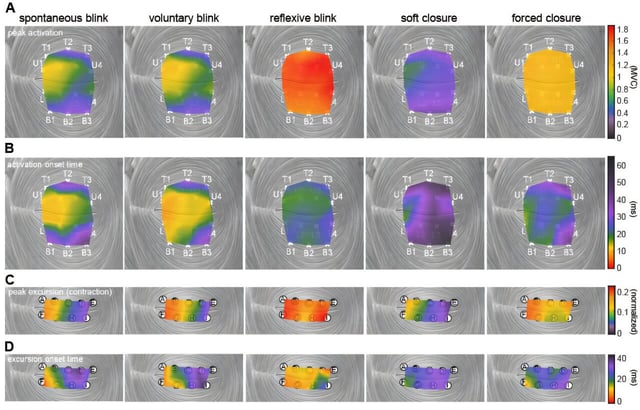Overview
- The orbicularis oculi muscle was found to contract in complex, action-specific patterns rather than a simple up-and-down motion.
- Researchers identified and characterized five distinct eyelid closures: spontaneous, voluntary, reflexive, soft and forced blinks.
- Tiny wire electrodes paired with ultraslow motion-capture enabled high-resolution mapping of muscle activation across eyelid movements.
- Insights have been translated into detailed design parameters for neuroprostheses, and the team is now refining prototypes ahead of clinical testing.
- Funded by the NIH’s National Eye Institute, the work aims to restore natural blinking in patients with eyelid dysfunction to protect eye health.
